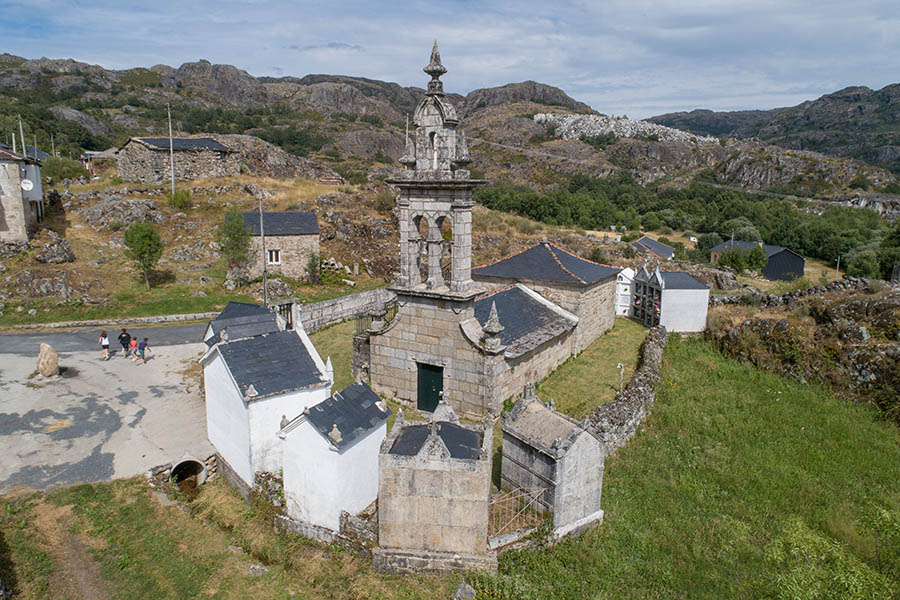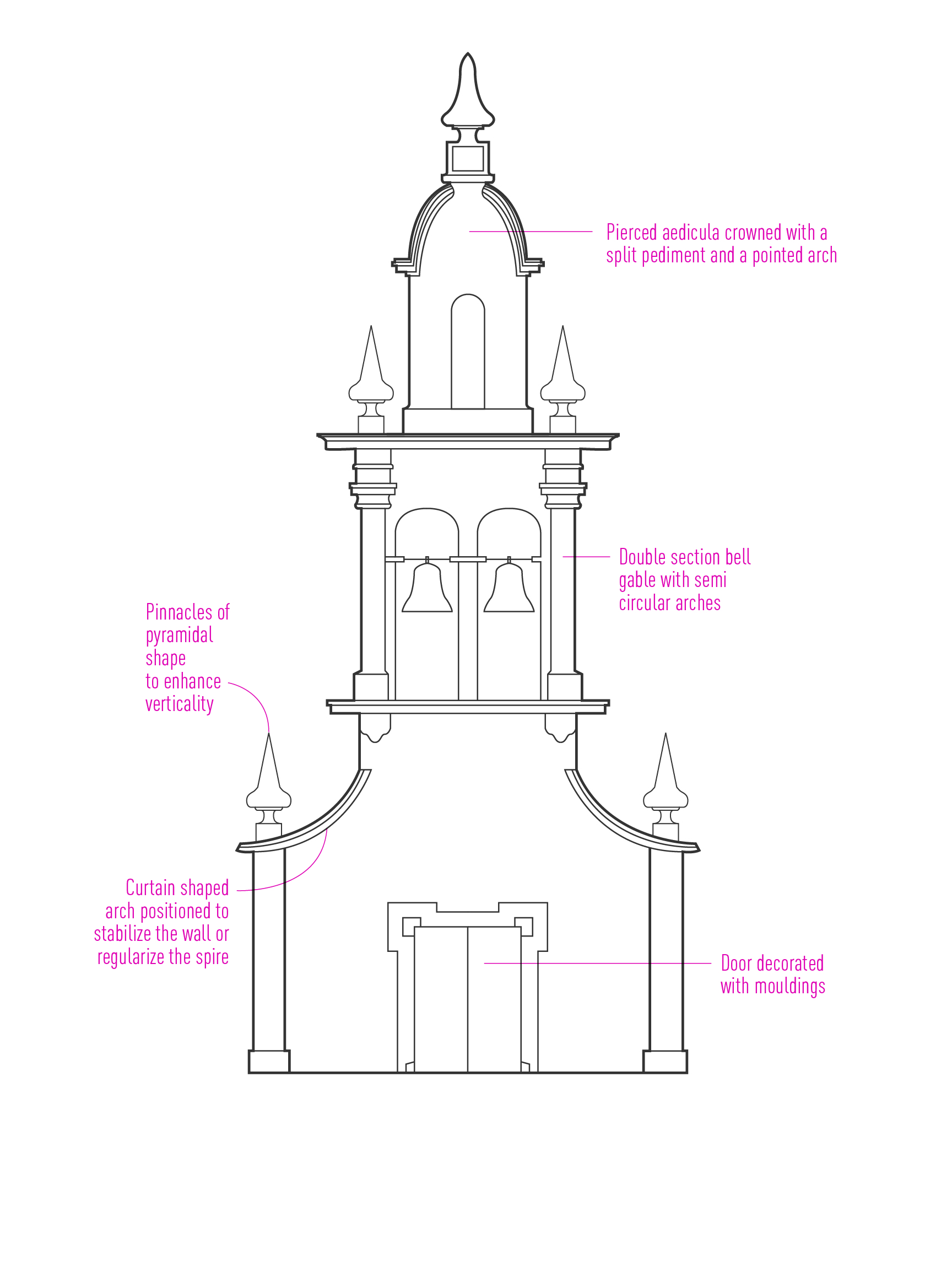
Saint Sebastian of Pradorramisquedo, built or rebuilt in the year 1802, as recorded in an inscription on its facade, would be a common and nondescript late-baroque temple, except for its fabulous bell gable. When looking at it, it seems that Castelao himself was inspired by this bordering village when he wrote in the Sempre in Galiza (1944) about the homeland:
"For some the Earth is the small cradle in which they were born: just a beautiful valley, which has a silver shinning river, some smoking houses, a spear-shaped bell gable and a cemetery where their grandparents rest in peace."
With a rectangular floor plan and a single nave, the temple dedicated to the holy martyr born in Narbonne (France) deserves compliments and praise, fundamentally, for the surprising stylization and the extraordinary height of its tower. Divided into two sections, the main one is framed by two smooth pilasters, opening in its interior a high and well proportioned double opening, under semicircular arches. Above it, a flowered cornice serves as the basis for a rectangular aedicule flanked by pinnacles and finished in a baroque-inspired split pediment that opts for the pointed arch as a coronation.

The baroque altarpiece that stands on the main altar – of popular form– is the only one that looks inside the temple that, in 2007, suffered the theft of a valuable carving of Saint Anthony dating back to the XVIII century along with two tables with the images of Saint Paul and Saint Peter.
Ramón Otero Pedrayo wrote in 1962: "the reliefs of 1,600 accompany him at the entrance in the frames of Galicia due to the impressive solitudes of Prado Ramisquedo".
... Located near the Bibey River on a mountain and surrounded by large boulders, which make it impossible for the people to enter, except from the side of the river; The Climate is cold, but healthy ”(...)“ The land is rough and fragrant, with some small hills nearby. It produces: rye, potatoes, legumes, oak wood and breeds; cattle, sows, sheep and goats, and hunts of various species are raised. Population: 16 residents, 80 souls ... ”
Pascual Madoz (1845)